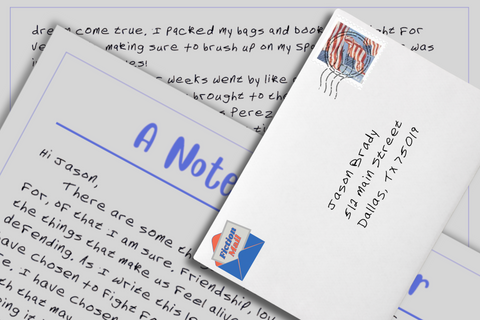What is Serialized Fiction , and How Do I Read It?
Share
In the fiction genre, there’s a captivating storytelling technique that has intrigued readers for centuries—serialized fiction. It's a narrative style that unfolds gradually, with each installment leaving audiences eagerly awaiting the next. But what exactly is serialized fiction and what are some examples of serialized fiction?
What is Serialized Fiction?
Serialized fiction is a mode of storytelling where a larger narrative is broken down into smaller, episodic segments released over time. These segments are typically published sequentially in newspapers, magazines, or online platforms. Each installment often ends with a cliffhanger, enticing readers to continue following the story.
The allure of serialized fiction lies in its ability to create anticipation and engagement among readers. By parceling out the story in installments, authors can build suspense, develop complex characters, and explore intricate plotlines in a more dynamic manner.
Examples of Serialized Fiction
"The Pickwick Papers" by Charles Dickens (1836-1837)
Serialized in "The Posthumous Papers of the Pickwick Club," this comedic masterpiece follows the adventures of Mr. Pickwick and his fellow members as they travel through the English countryside.
"The Adventures of Sherlock Holmes" by Arthur Conan Doyle (1891-1892)
Serialized in "The Strand Magazine," these iconic detective stories introduced readers to the brilliant mind of Sherlock Holmes and his loyal companion, Dr. John Watson.
"To Kill a Mockingbird" by Harper Lee (1960)
Serialized in "The Atlantic Monthly," this Pulitzer Prize-winning novel explores themes of racial injustice and moral growth in the Deep South.
Serialized Fiction Meets Technology
Today, serialized fiction is available on various apps and websites, offering readers a convenient way to access and enjoy stories in bite-sized installments. Here are some popular platforms for serialized fiction:
Wattpad
One of the earliest and most well-known platforms for serialized fiction, Wattpad boasts a vast library of user-generated stories across various genres. Writers can upload their work chapter by chapter, and readers can interact with authors and fellow readers through comments and messages.
Episode
Targeted primarily at a teenage audience, Episode is known for its interactive storytelling format where readers can make choices that influence the direction of the narrative. The platform features a mix of user-generated and professionally-produced stories, often focusing on romance, drama, and young adult themes.
Kindle Vella
Launched by Amazon in 2021, Kindle Vella provides a platform for authors to publish serialized fiction. Readers can purchase episodes using tokens, with the first few episodes of each story available for free as a sample. Authors can interact with readers through author's notes and responses to reader comments. Genres on Kindle Vella range from romance and mystery to fantasy and science fiction, catering to a wide audience.
Serialized Fiction as Letters
While these digital platforms for serialized fiction are fantastic, we’re partial to our own take on serialized fiction – Fiction Mail!
Fiction Mail combines the action, adventure, and cliffhangers of great serialized fiction with the thrill of getting physical letters in the mail. With a Fiction Letter Series, you get one letter per week from your old (fictional!) friend who has an amazing story to tell you. As the weeks unfold, your friend brings you along on an amazing adventure.
Each Fiction Mail Series contains either 8 letters delivered over two months, or 4 letters delivered over a month. It’s a really fun way to enjoy great fiction as well as the nostalgia of getting personal letters in the mail!
Regardless of the method you get serialized fiction, whether it’s through magazines, an app or website, or as physical letters from Fiction Mail, serialized fiction provides fun, episodic stints of fiction that will leave you waiting until the next installment!

